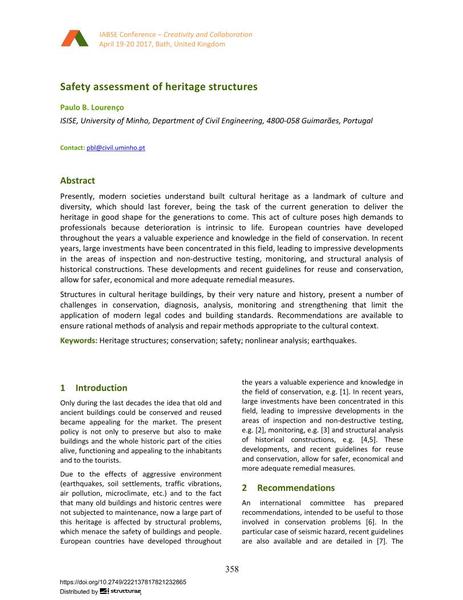Safety assessment of heritage structures

| Author(s): |
Paulo B. Lourenço
|
|---|---|
| Medium: | conference paper |
| Language(s): | English |
| Conference: | IABSE Conference: Creativity and Collaboration – Instilling Imagination and Innovation in Structural Design, Bath, United Kingdom, 19-20 April 2017 |
| Published in: | IABSE Conference Bath, April 19-20, 2017 |
| Page(s): | 358-359 |
| Year: | 2017 |
| DOI: | 10.2749/222137817821232865 |
| Abstract: |
Presently, modern societies understand built cultural heritage as a landmark of culture and diversity, which should last forever, being the task of the current generation to deliver the heritage in good shape for the generations to come. This act of culture poses high demands to professionals because deterioration is intrinsic to life. European countries have developed throughout the years a valuable experience and knowledge in the field of conservation. In recent years, large investments have been concentrated in this field, leading to impressive developments in the areas of inspection and non-destructive testing, monitoring, and structural analysis of historical constructions. These developments and recent guidelines for reuse and conservation, allow for safer, economical and more adequate remedial measures. Structures in cultural heritage buildings, by their very nature and history, present a number of challenges in conservation, diagnosis, analysis, monitoring and strengthening that limit the application of modern legal codes and building standards. Recommendations are available to ensure rational methods of analysis and repair methods appropriate to the cultural context. |
| Keywords: |
earthquakes safety non-linear analysis conservation heritage structures
|
0.09 MB
- About this
data sheet - Reference-ID
10292826 - Published on:
27/01/2019 - Last updated on:
21/05/2021



